#pandemic coronavirus
Text



When those in power constantly lied about the little things, it isn't hard to see why people have tuned out--and even questioned whether masks were even effective against the virus.
#coronavirus#long covid#covid 19#pandemic#america is a failed state#dump the duopoly#america is a shithole country#fuck the system#fuck them all
10K notes
·
View notes
Text

#mask up#covid#covid 19#covid isn't over#pandemic#covid conscious#long covid#covid is airborne#wear a mask#coronavirus
5K notes
·
View notes
Text
#polling around#poll#tumblr poll#covid-19#coronavirus#covid#pandemic#curious because i just got covid for the very first time and am wondering who else is in the same boat
5K notes
·
View notes
Text

Source

#public health#current events#news#news media#cdc#Covid#coronavirus#pandemic#bleak#joe biden#politics#us politics
28K notes
·
View notes
Text

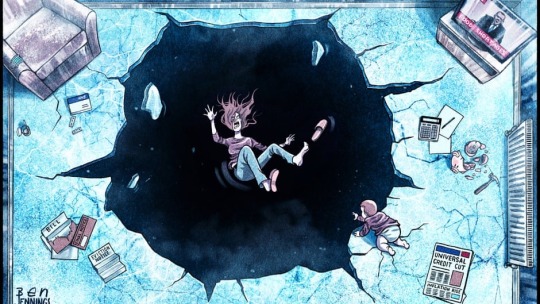
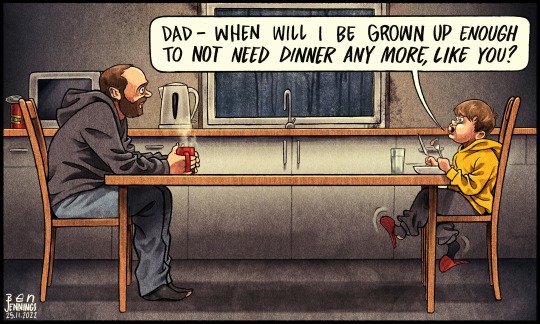
Ben Jennings
“The opposite of poverty is not wealth; the opposite of poverty is enough.” —Dr. Wess Stafford
#art#cartoon#poverty#unemployment#economic crisis#coronavirus#pandemic#covid 19#cartoons#ben jennings
6K notes
·
View notes
Text

What Did We Learn From Covid?
These days, a conventional wisdom has settled in that we somehow overreacted to Covid. That our response went too far, and we are now past those silly times. Here's the lesson to take away: we didn't do enough. Trump's response was idiotic and catastrophic (does anyone remember him saying blue state governors "have to treat us well" if they want coronavirus help?). Over 1.1 million Americans have died. Countless lives have been shattered by Long Covid. We let the virus be politicized by opportunists, and allowed false narratives about governments "controlling" us to dominate our media. The hard choices that were made to prevent even more death and suffering are now, ludicrously, seen as mistakes.
Help keep this work sustainable by joining the Sorensen Subscription Service! Also on Patreon.
711 notes
·
View notes
Text
You might be forgiven for thinking it’s been a very quiet few months for the Covid-19 pandemic. Besides the rollout of new boosters, the coronavirus has largely slipped out of the headlines. But the virus is on the move. Viral levels in wastewater are similar to what they were during the first two waves of the pandemic. Recent coverage of the so-called Pirola variant, which is acknowledged to have “an alarming number of mutations,” led with the headline “Yes, There’s a New Covid Variant. No, You Shouldn’t Panic.”
Even if you haven’t heard much about the new strain of the coronavirus, being told not to panic might induce déjà vu. In late 2021, as the Omicron variant was making its way to the United States, Anthony Fauci told the public that it was “nothing to panic about” and that “we should not be freaking out.” Ashish Jha, the Biden administration’s former Covid czar, also cautioned against undue alarm over Omicron BA.1, claiming that there was “absolutely no reason to panic.” This is a telling claim, given what was to follow—the six weeks of the Omicron BA.1 wave led to hundreds of thousands of deaths in a matter of weeks, a mortality event unprecedented in the history of the republic.
Indeed, experts have been offering the public advice about how to feel about Covid-19 since January 2020, when New York Times columnist Farhad Manjoo opined, “Panic will hurt us far more than it’ll help.” That same week, Zeke Emanuel—a former health adviser to the Obama administration, latterly an adviser to the Biden administration—said Americans should “stop panicking and being hysterical.… We are having a little too much [sic] histrionics about this.”
This concern about public panic has been a leitmotif of the Covid-19 pandemic, even earning itself a name (“elite panic”) among some scholars. But if there’s one thing we’ve learned, three and a half years into the current crisis, it’s that—contrary to what the movies taught us—pandemics don’t automatically spawn terror-stricken stampedes in the streets. Media and public health coverage have a strong hand in shaping public response and can—under the wrong circumstances—promote indifference, incaution, and even apathy. A very visible example of this was the sharp drop in the number of people masking after the CDC revised its guidelines in 2021, recommending that masking was not necessary for the vaccinated (from 90 percent in May to 53 percent in September).
As that example suggests, emphasizing the message “don’t panic” puts the cart before the horse unless tangible measures are being taken to prevent panic-worthy outcomes. And indeed, these repeated assurances against panic have arguably also preempted a more vigorous and urgent public health response—as well as perversely increasing public acceptance of the risks posed by coronavirus infection and the unchecked transmission of the virus. This “moral calm”—a sort of manufactured consent—impedes risk mitigation by promoting the underestimation of a threat. Soothing public messaging during disasters can often lead to an increased death toll: Tragically, false reassurance contributed to mortality in both the attacks on the World Trade Center and the sinking of the Titanic.
But at a deeper level, this emphasis on public sentiment has contributed to confusion about the meaning of the term “pandemic.” A pandemic is an epidemiological term, and the meaning is quite specific—pandemics are global and unpredictable in their trajectory; endemic diseases are local and predictable. Despite the end of the Public Health Emergency in May, Covid-19 remains a pandemic, by definition. Yet some experts and public figures have uncritically advanced the idea that if the public appears to be tired, bored, or noncompliant with public health measures, then the pandemic must be over.
But pandemics are impervious to ratings; they cannot be canceled or publicly shamed. History is replete with examples of pandemics that blazed for decades, sometimes smoldering for years before flaring up again into catastrophe. The Black Death (1346–1353 AD), the Antonine Plague (165–180 AD), and the Plague of Justinian (541–549 AD), pandemics all, lacked the quick resolution of the 1918 influenza pandemic. A pandemic cannot tell when the news cycle has moved on.
Yet this misperception—that pandemics can be ended by human fiat—has had remarkable staying power during the current crisis. In November 2021, the former Obama administration official Juliette Kayyem claimed that the pandemic response needed to be ended politically, with Americans getting “nudged into the recovery phase” by officials. It is fortunate that Kayyem’s words were not heeded—the Omicron wave arrived in the US just weeks after her article ran—but her basic premise has informed Biden’s pandemic policy ever since.
Perhaps even less responsibly, the physician Steven Phillips has called for “new courageous ‘accept exposure’ policies”—asserting that incautious behavior by Americans would be the true signal of the end of the pandemic. In an essay for Time this January, Phillips wrote: “Here’s my proposed definition: the country will not fully emerge from the Covid-19 pandemic until most people in our diverse nation accept the risk and consequences of exposure to a ubiquitous SARS-CoV-2, the virus that causes Covid-19.”
This claim—that more disease risk and contagion means the end of a disease event—runs contrary to the science. Many have claimed that widespread SARS-CoV-2 infections will lead to increasingly mild disease that poses fewer concerns for an increasingly vaccinated (or previously infected) population. In fact, more disease spread means faster evolution for SARS-CoV-2, and greater risks for public health. As we (A.C. and collaborators) and others have pointed out, rapid evolution creates the risk of novel variants with unpredictable severity. It also threatens the means that we have to prevent and treat Covid-19: monoclonal antibody treatments no longer work, Paxlovid is showing signs of viral resistance, and booster strategy is complicated by viral evolution of resistance to vaccines.
But these efforts to manage and direct public feelings are not just more magical thinking; they are specifically intended to promote a return to pre-pandemic patterns of work and consumption. This motive was articulated explicitly in a McKinsey white paper from March 2022, which put forward the invented concept of “economic endemicity”—defined as occurring when “epidemiology substantially decouples from economic activity.” The “Urgency of Normal” movement similarly used an emotional message (that an “urgent return to fully normal life and schooling” is needed to “protect” children) to advocate for the near-total abandonment of disease containment measures. But in the absence of disease control measures, a rebound of economic activity can only lead to a rebound of disease. (This outcome was predicted by a team that was led by one of the authors [A.C.] in the spring of 2021.)
A pandemic is a public health crisis, not a public relations crisis. Conflating the spread of a disease with the way people feel about responding to that spread is deeply illogical—yet a great deal of the Biden administration’s management of Covid-19 has rested on this confusion. Joe Biden amplified this mistaken perspective last September when he noted that the pandemic was “over”—and then backed that claim by stating, “If you notice, no one’s wearing masks. Everybody seems to be in pretty good shape.” The presence or absence of health behaviors reveals little about a threat to health itself, of course—and a decline in mask use has been shaped, in part, by the Biden administration’s waning support for masking.
Separately, long Covid poses an ongoing threat both at an individual and a public health level. If our increasingly relaxed attitude toward public health measures and the relatively unchecked spread of the virus continue, most people will get Covid at least once a year; one in five infections leads to long Covid. Although it’s not talked about a lot, anyone can get long Covid; vaccines reduce this risk, but only modestly. This math gets really ugly.
The situation we are in today was predictable. It was predictable that the virus would rapidly evolve to evade the immune system, that natural immunity would wane quickly and unevenly in the population, that a vaccine-only strategy would not be sufficient to control widespread Covid-19 transmission through herd immunity, and that reopening too quickly would lead to a variant-driven rebound. All of these unfortunate outcomes were predicted in peer-reviewed literature in 2020–21 by a team led by one of the authors (A.C.), even though the soothing public messaging at the time called it very differently.
As should now be very clear, we cannot manifest our way to a good outcome. Concrete interventions are required—including improvements in air quality and other measures aimed at limiting spread in public buildings, more research into vaccine boosting strategy, and investments in next-generation prophylactics and treatments. Rather than damping down panic, public health messaging needs to discuss risks honestly and focus on reducing spread. Despite messages to the contrary, our situation remains unstable, because the virus continues to evolve rapidly, and vaccines alone cannot slow this evolution.
In the early months of the pandemic, many in the media drew parallels between the public’s response to Covid-19 and the well-known “stages of grief”: denial, bargaining, anger, depression, and acceptance. The current situation with Covid-19 calls for solutions, not a grieving process that should be hustled along to the final stage of acceptance.
833 notes
·
View notes
Text
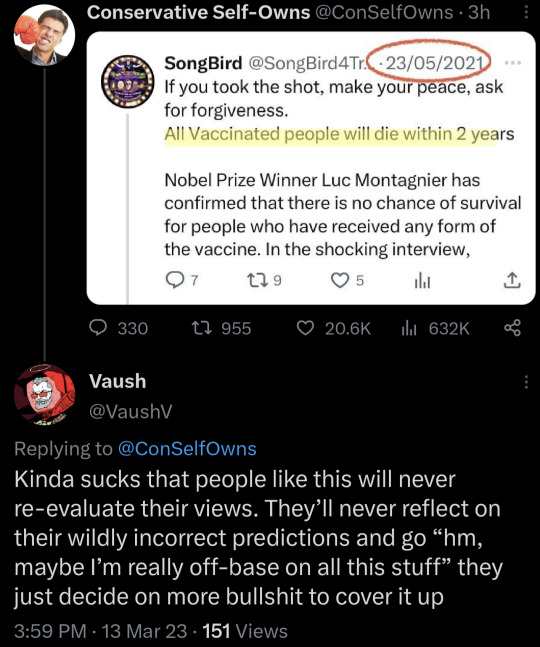
#us politics#twitter#tweet#republicans#conservatives#conservatives be like#republicans be like#2023#2021#covidー19#coronavirus vaccine#covid vaccine#coronavirus pandemic#conservative self owns#vaush#@vaushv#@conselfowns
2K notes
·
View notes
Text
I’m so over Covid and the way people are acting about it. I’m tired of having to pretend that corona isn’t a systemic airborne illness with similarities to HIV. I’m tired of being painted as unreasonable for suggesting masks. I’m tired of essentially being housebound to protect my elderly and chronically ill family members. I’m tired of being portrayed as irrational or crazy for not wanting to gamble with long covid and the numerous life ruining iterations of it. This is all so bleak and frustrating.
310 notes
·
View notes
Text
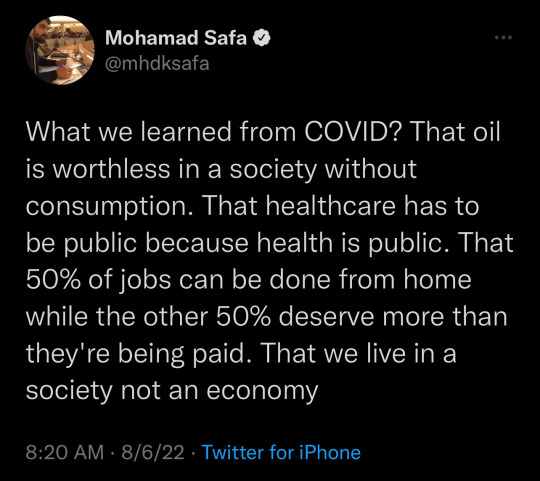
#covid vaccine#tw covid#covid news#fuck covid#pandemic#covid19#covid cases#coronavirus#vaccine#covid pandemic#covid#long covid#work from home#make money fast#online business#how to make money online#make money from home#how to earn money#communism#anarchism#antifascism#socialist#revolution#anarchocommunism
1K notes
·
View notes
Text
"[M]any people with chronic and debilitating conditions are more vulnerable than they were before the pandemic began. The policies that protected them during the pandemic’s height are gone—and yet SARS-CoV-2 is still here, adding to the dangers they face. The losses have been written off, Bortko told me: Cases of long COVID in Madison County have been dismissed as products of 'risk factors' that don’t apply to others; deaths, too, have been met with a shrug of 'Oh, they were old; they were unhealthy.' If, this winter, COVID sickens or kills more people who are older, more people who are immunocompromised, more people of color, more essential and low-income workers, more people in rural communities, 'there will be no press coverage,' Hlatshwayo Davis said. Americans already expect that members of these groups will die."
"COVID still kills roughly as many Americans every week as died on 9/11. It is on track to kill at least 100,000 a year—triple the typical toll of the flu. Despite gross undercounting, more than 50,000 infections are being recorded every day. The CDC estimates that 19 million adults have long COVID. Things have undoubtedly improved since the peak of the crisis, but calling the pandemic 'over' is like calling a fight 'finished' because your opponent is punching you in the ribs instead of the face."
#covid#coronavirus#covid-19#pandemic#epidemic#covid pandemic#socialism#communism#marxism#politics#us politics#anti capitalism#united states#covid 19#vaccines#covid vaccine#long covid
3K notes
·
View notes
Text

#mask up#covid#covid 19#covid isn't over#pandemic#covid conscious#long covid#covid is airborne#wear a mask#coronavirus
2K notes
·
View notes
Text
Covid19 was planned for a long time. Search for Dr. Judy Mikovits online.
#Judy Mikovits#government#united states#coronavirus#new world order#great reset#covid19#virus#vaccines#plandemic#pandemic#dr fauci#London real
419 notes
·
View notes
Text

Seen many folks - fully vaxxed + boosted, mind you - posting about coming down with Covid this past week.
NO ONE IS FULLY IMMUNE. STUDIES SHOW EVERY TIME YOU CONTRACT COVID, NO MATTER HOW MILD, IT DOES EXPONENTIAL PERMANENT DAMAGE TO YOUR BODY & IMMUNE SYSTEM.
PLEASE wear a damn mask.
448 notes
·
View notes
Text
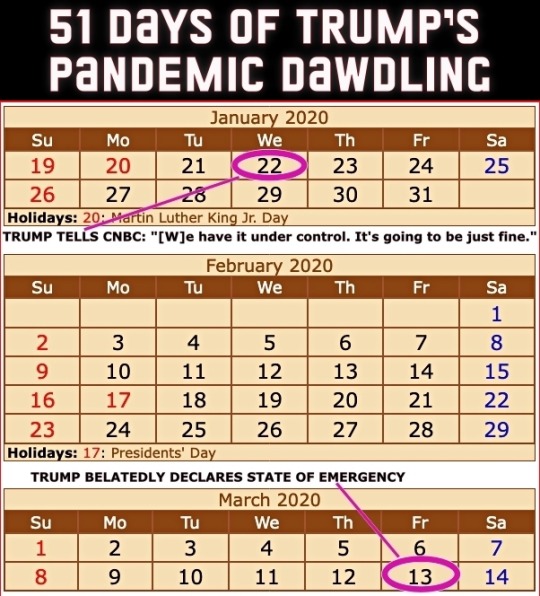
Four years ago today (March 13th), then President Donald Trump got around to declaring a national state of emergency for the COVID-19 pandemic. The administration had been downplaying the danger to the United States for 51 days since the first US infection was confirmed on January 22nd.
From an ABC News article dated 25 February 2020...
CDC warns Americans of 'significant disruption' from coronavirus
Until now, health officials said they'd hoped to prevent community spread in the United States. But following community transmissions in Italy, Iran and South Korea, health officials believe the virus may not be able to be contained at the border and that Americans should prepare for a "significant disruption."
This comes in contrast to statements from the Trump administration. Acting Department of Homeland Security Secretary Chad Wolf said Tuesday the threat to the United States from coronavirus "remains low," despite the White House seeking $1.25 billion in emergency funding to combat the virus. Larry Kudlow, director of the National Economic Council, told CNBC’s Kelly Evans on “The Exchange” Tuesday evening, "We have contained the virus very well here in the U.S."
[ ... ]
House Speaker Nancy Pelosi called the request "long overdue and completely inadequate to the scale of this emergency." She also accused President Trump of leaving "critical positions in charge of managing pandemics at the National Security Council and the Department of Homeland Security vacant."
"The president's most recent budget called for slashing funding for the Centers for Disease Control, which is on the front lines of this emergency. And now, he is compounding our vulnerabilities by seeking to ransack funds still needed to keep Ebola in check," Pelosi said in a statement Tuesday morning. "Our state and local governments need serious funding to be ready to respond effectively to any outbreak in the United States. The president should not be raiding money that Congress has appropriated for other life-or-death public health priorities."
She added that lawmakers in the House of Representatives "will swiftly advance a strong, strategic funding package that fully addresses the scale and seriousness of this public health crisis."
Senate Minority Leader Chuck Schumer also called the Trump administration's request "too little too late."
"That President Trump is trying to steal funds dedicated to fight Ebola -- which is still considered an epidemic in the Democratic Republic of the Congo -- is indicative of his towering incompetence and further proof that he and his administration aren't taking the coronavirus crisis as seriously as they need to be," Schumer said in a statement.
A reminder that Trump had been leaving many positions vacant – part of a Republican strategy to undermine the federal government.
Here's a picture from that ABC piece from a nearly empty restaurant in San Francisco's Chinatown. The screen displays a Trump tweet still downplaying COVID-19 with him seeming more concerned about the effect of the Dow Jones on his re-election bid.
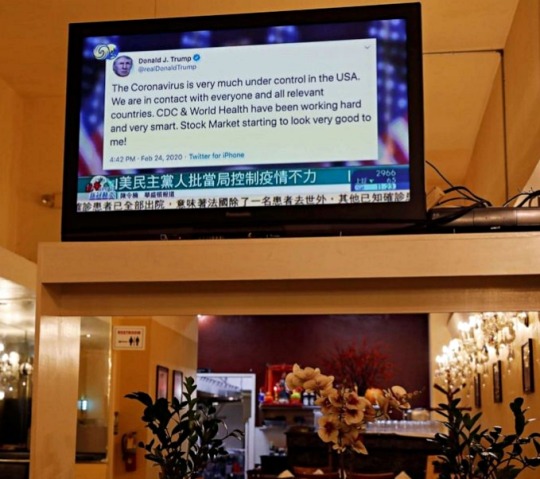
People were not buying Trump's claims but they were buying PPE.
I took this picture at CVS on February 26th that year.
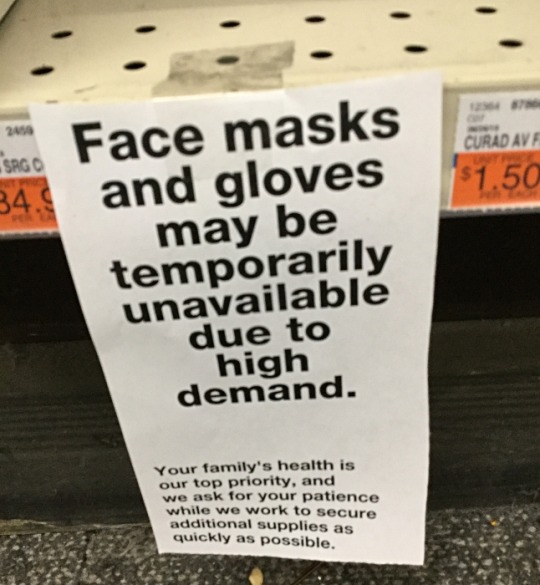
The stock market which Trump in his February tweet claimed looked "very good" was tanking on March 12th – the day before his state of emergency declaration.

Trump succeeded in sending the US economy into recession much faster than George W. Bush did at the end of his term – quite a feat!. (As an aside, every recession in the US since 1981 has been triggered by Republican presidents.)
Of course Trump never stopped trying to downplay the pandemic nor did he ever take responsibility for it. The US ended up with the highest per capita death rate of any technologically advanced country.
Precious time was lost while Trump dawdled. Orange on this map indicates COVID infections while red indicates COVID deaths. At the time Trump declared a state of emergency, the virus had already spread to 49 states.

The United States could have done far better and it had the tools to do so.
The Obama administration had limited the number of US cases of Ebola to under one dozen during that pandemic in the 2010s. Based on their success, they compiled a guide on how the federal government could limit future pandemics.
Obama team left pandemic playbook for Trump administration, officials confirm
Of course Trump ignored it.
Unlike those boxes of nuclear secrets in Trump's bathroom, the Obama pandemic limitation document is not classified. Anybody can read it – even if Trump didn't. This copy comes from the Stanford University Libraries.
TOWARDS EPIDEMIC PREDICTION: FEDERAL EFFORTS AND OPPORTUNITIES IN OUTBREAK MODELING
Feel free to share this post with anybody who still feels nostalgic about the Trump White House years!
#covid-19#coronavirus#pandemic#public health#donald trump#trump's incompetent response to the pandemic#covid state of emergency#2020#trump recession#51 days of trump pandemic dawdling#obama pandemic playbook#2010s ebola outbreak#nostalgia for trump administration#republicans#election 2024#vote blue no matter who
108 notes
·
View notes
Text
On February 13, 2024, the Washington Post reported that the CDC is considering ending the five-day isolation period for those with a COVID infection according to anonymous CDC staff. It is imperative that the CDC minimally maintains current isolation guidelines to prevent the unnecessary spread of COVID.
Why is the five day isolation period necessary? The five-day isolation period has allowed people infected by COVID to rest and recover from illness and prevent the exposure and spread of COVID to uninfected people. Ideally, a ten-day isolation period is better to ensure an adequate amount of time for rest and recovery.
Allowing your immune system sufficient time to fight the infection is important. Rest and recovery from an active COVID infection is important, as physical overexertion can have adverse effects on one’s health. Even if vaccinated, boosted, and healthy, a COVID infection can greatly harm one's health, and may lead to Long COVID, a condition that has harmed and disabled millions of Americans.
Prevention of exposure to and spread of COVID requires a minimum five-day isolation period. Clear evidence demonstrates that in the course of an active COVID infection, the highest viral load occurs approximately by day 4 of an infection. Some people may have their symptoms end earlier than others, however, early symptom resolution does not necessarily mean the end of infectiousness, as asymptomatic COVID transmission can occur. Ultimately, by preventing COVID infections, the likelihood of people becoming severely ill from COVID, as well as those who will develop long COVID, will be greatly reduced.
The CDC will be considering and making a decision by April. During this time, we urgently ask Congress and the White House to intervene and ensure that the CDC maintains the current COVID five-day isolation policy.
Instructions:
We must ask Congress and the White House to ensure the CDC maintains the current 5 day isolation policy for COVID infection. It is important that the CDC maintains its current policy to ensure that the American people have enough time to rest and recover from an active COVID infection, as well as to prevent the spread of COVID to other people. Rest and recovery is important, as an infection can have adverse effects on health. Even those vaccinated, boosted, or healthy could face irreversible harm from COVID. Having multiple infections has the potential to increase the risk of developing Long COVID, a condition that has already injured and disabled millions of Americans. Submit a letter to your government officials via Action Network!
Letter to White House and Congress
Example Letter Below:
Dear Representative,
I am writing to ask you to ensure that the CDC maintains the current isolation policy for those with an active COVID infection, as this protects the health and well being of all Americans at work, school, and all other places of gatherings.
COVID infections injure, harm, and cause death among millions of Americans. Everyone must be protected from COVID infections. COVID is spread through the inhalation of aerosol particles, and the risk of becoming infected is higher in indoor settings compared to outdoor settings. Due to its mechanism of spread, the current 5-day isolation policy is a primary key layer of protection for prevention, as opposed to other approaches against infections in public settings.
Shortening the isolation window is a failure to recognize the clear scientific evidence that people may have the highest viral loads by day 4 of an infection.(1) For some people, their symptoms may abate below the 5-day time window, but they may remain infectious.(2)
The public relies on guidelines that establish sufficient standards in workplaces and other places of gathering. It ensures protection in vulnerable settings, such as healthcare, long-term care facilities, schools, and workplace settings. COVID remains an ongoing pandemic and threat to the health of the American people. Ongoing reinfections result in more people developing Long COVID.(3) Any consideration to reduce or eliminate the COVID isolation guideline inexplicably fails to acknowledge core control measures for infectious disease. Any changes prevent the public’s ability to have a standard threshold for rest and recovery from a COVID infection.
We ask for your support to ensure that the CDC prioritizes the health of people first. We urge you to act on the behalf of all people, especially for those who are most vulnerable. This includes those with advanced age, the immunocompromised, those living with other health conditions, disabled people. Let’s decrease infections in our communities by keeping scientific and evidence-based isolation guidelines.
References:
1. Jennifer K Frediani, Richard Parsons, Kaleb B McLendon, Adrianna L Westbrook, Wilbur Lam, Greg Martin, Nira R Pollock, The New Normal: Delayed Peak SARS-CoV-2 Viral Loads Relative to Symptom Onset and Implications for COVID-19 Testing Programs, Clinical Infectious Diseases, Volume 78, Issue 2, 15 February 2024, Pages 301–307, https://doi.org/10.1093/cid/ciad582
2. Rinki Deo, Manish C. Choudhary, Carlee Moser, et al. Symptom and Viral Rebound in Untreated SARS-CoV-2 Infection. Ann Intern Med.2023;176:348-354. [Epub 21 February 2023]. doi:10.7326/M22-2381
3. Bowe, B., Xie, Y. & Al-Aly, Z. Postacute sequelae of COVID-19 at 2 years. Nat Med 29, 2347–2357 (2023). https://doi.org/10.1038/s41591-023-02521-2.
Submit Letter to Government Leaders
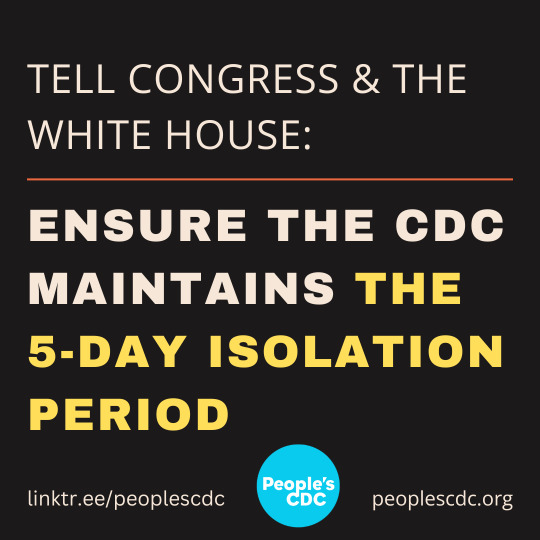
#op#covid#covid pandemic#covid news#covid 19#covid-19#covid isolation#coronavirus#coronavirus pandemic#pandemic#uspol#cdc#people's cdc#pcdc#covid isn't over#covid recovery#img#links#described in alt text
209 notes
·
View notes